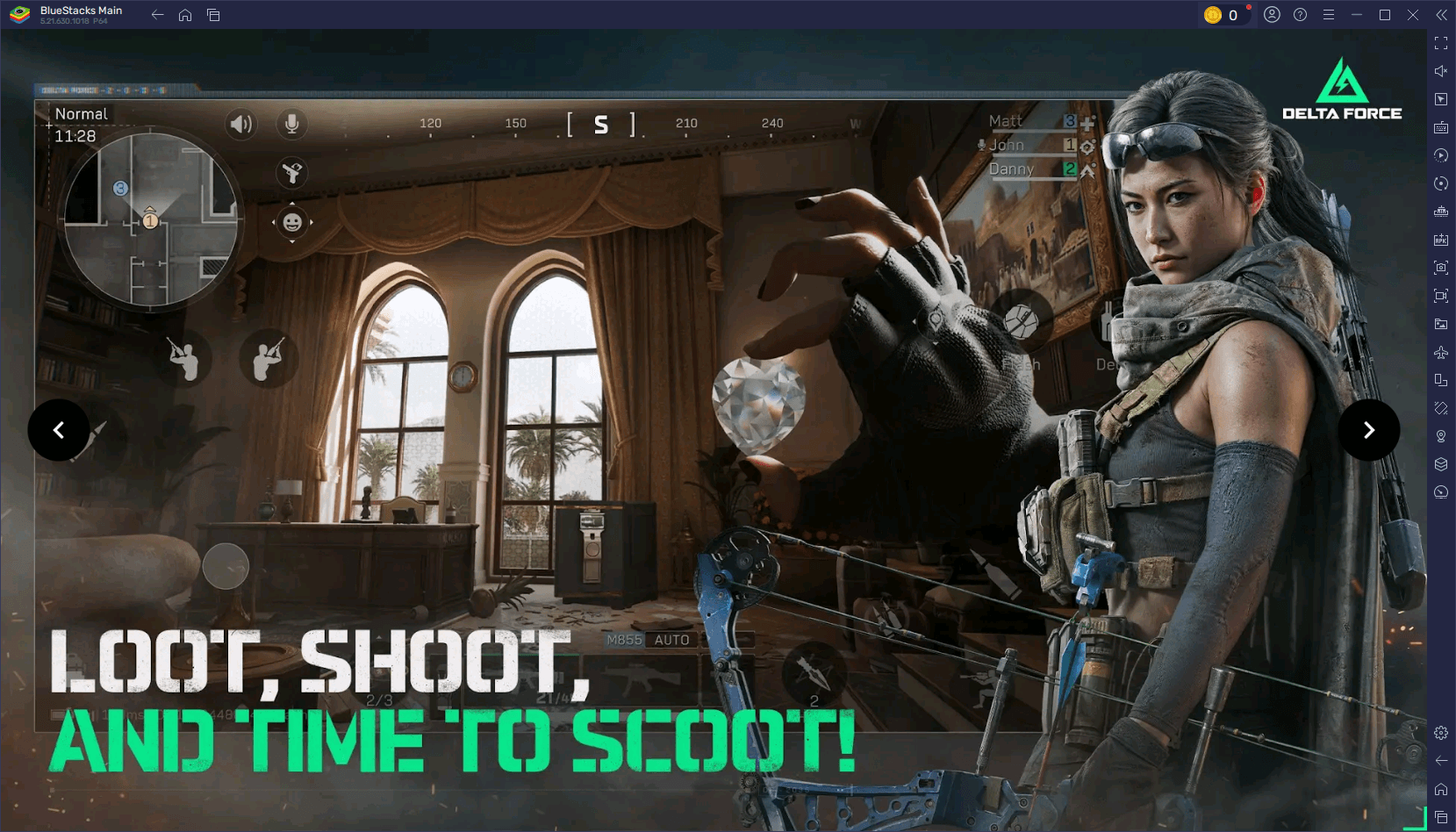The Biggest Gaming Monitor Trends of CES 2025
At CES 2025, the array of new gaming monitors was nothing short of impressive, as I scoured the show floor to bring you the latest from the industry's leading vendors. This year marked a significant milestone in display technology, with numerous innovations and enhancements that make 2025 one of the most exciting periods for gaming monitors in recent memory.
QD-OLED Isn’t Going Anywhere and Should Become More Accessible
The undeniable trend at CES 2025 was the continued prominence of QD-OLED technology. Major brands like MSI, Gigabyte, and LG showcased their latest offerings, emphasizing their advanced burn-in warranties and protective features. The push towards QD-OLED displays is set to intensify throughout the year.
Given the surge in QD-OLED popularity in 2024, it's no surprise to see this technology continue to evolve. Several companies unveiled 4K 240Hz QD-OLED monitors equipped with high-bandwidth DisplayPort 2.1 connections. MSI, for instance, introduced the MPG 272QR QD-OLED X50, a 1440p QD-OLED monitor boasting an astonishing 500Hz refresh rate. Other manufacturers presented their unique takes on these high-performance panels, indicating a future filled with fast and visually stunning monitors.
I was particularly impressed with the advancements in protection features. A notable example is Asus's Neo Proximity Sensor, integrated into the upcoming ROG Swift OLED PG27UCDM and ROG Strix OLED XG27AQDPG. This innovative addition to their OLED Care suite detects when you're away from your PC and automatically switches to a black screen to prevent burn-in and pixel wear. This is a significant improvement over the current need to manually turn off your monitor when you're away.As QD-OLED technology matures through multiple generations, we can anticipate a decline in prices. While the initial launch prices for these cutting-edge models remain high, opting for a model from a previous generation can offer substantial savings without sacrificing quality.
Mini-LED Isn’t Dead, But It Is Tech To Keep an Eye Out For
While Mini-LED technology didn't dominate the show, it was still present. MSI, for instance, is positioning its dual-mode AI mini-LED monitor, the MPG 274URDFW E16M, as a more affordable alternative to QD-OLED. This approach is promising, especially given my experience testing various Mini-LED monitors.
The MPG 274URDFW E16M features 1,152 local dimming zones and a peak brightness of approximately 1,000 nits, delivering impressive contrast in brightly lit environments. It supports 4K resolution at 160Hz for smooth, high-resolution gameplay and can switch to 320Hz at 1080p. However, I remain skeptical about its AI-driven "dual-mode AI" feature, which automatically adjusts resolution based on the content displayed.
Despite the limited options showcased, I anticipate seeing more Mini-LED monitors in the future. The fear of burn-in associated with OLED displays is a significant concern, whereas Mini-LEDs offer high brightness and excellent image quality without this risk. With enough dimming zones (1,152 or more for 27-inch models), the issue of blooming is minimized. If priced competitively, Mini-LEDs could serve as an attractive alternative for those unwilling to invest in high-maintenance OLED monitors.
While pricing for the MPG 274URDFW E16M isn't official yet, it's expected to be more affordable than its QD-OLED counterparts.
Refresh Rates and Resolutions Continue to Climb
As QD-OLED technology advances and graphics cards become more powerful, refresh rates are reaching new heights. 4K at 240Hz is now a reality, and 1440p at 500Hz is not far behind. Gigabyte's Aorus FO27Q5P caught my attention with its sleek design and vibrant display, set to achieve VESA TrueBlack 500 certification. This certification promises brighter highlights for enhanced HDR performance. Similar to other gaming monitor technologies, other brands offer their variations, such as the MPG 272QR QD-OLED X50 mentioned earlier, providing multiple options for consumers.
MSI also revived TN panels with the MSI MPG 242R X60N, which boasts an impressive 600Hz refresh rate. While TN panels have trade-offs in terms of color and viewing angles, their speed is undeniable. Whether the average gamer will notice the improvements in clarity and latency remains to be seen.
CES 2025 also marked the rise of 5K monitors. Acer showcased the Predator XB323QX, a 5K, 144Hz gaming monitor with Nvidia's latest G-Sync Pulsar technology. LG introduced a pair of new "5K2K" gaming monitors, the Ultragear 45GX950A and Ultragear 45GX990A, both in a 21:9 ultrawide format. The 45GX950A features a fixed 800R curve, while the 45GX990A offers a bendable display that can adjust from flat to a 900R curve.Outside the gaming realm, Asus unveiled the ProArt Display 6K PA32QCV, a 31.5-inch mini-LED display aimed at creators, priced at a competitive $1,249. Although not ideal for gaming due to its 60Hz refresh rate, it exemplifies the industry's continued push towards higher resolutions and better displays.
Smart Monitors Bring TVs and Gaming Monitors Closer Together
Smart monitors continue to blur the lines between TVs and gaming monitors, a trend I noticed while reviewing the Samsung G80SD. These devices offer the convenience of streaming services, making them particularly appealing for those in smaller living spaces or anyone looking to relax after gaming.
Several new smart monitor options are on the horizon for 2025. While not all were specifically designed for gaming, the trend is clearly growing. HP introduced the OMEN 32x Smart Gaming Monitor, a 32-inch 4K display pre-loaded with streaming apps and the ability to stream to up to four different platforms. The LG UltraGear 39GX90SA offers an ultrawide 800R curved display with similar streaming capabilities.
Samsung debuted the M9 Smart Monitor, featuring on-device neural processing to enhance its 4K OLED panel. This monitor can detect and adjust picture settings based on the displayed content, upscale lower-resolution content to 4K, and even offers a 165Hz refresh rate, making it suitable for gaming.
Wrapping Up
CES 2025 provided a glimpse into the future of gaming monitors, showcasing advancements that push the boundaries of display technology. While 2024 was a remarkable year for gaming monitors, 2025 promises even greater innovations and more accessible options for gamers and tech enthusiasts alike.
-
1

GTA 6 Set for Fall 2025 Release, CEO Confirms
Apr 03,2025
-
2

First ALGS in Asia Emerges in Japan
Jan 19,2025
-
3

Introducing the Ultimate Guide to Seamless Character Swapping in Dynasty Warriors: Origins
Feb 25,2025
-
4

Roblox: CrossBlox Codes (January 2025)
Mar 04,2025
-
5
![Roblox Forsaken Characters Tier List [UPDATED] (2025)](https://img.jdzca.com/uploads/18/17380116246797f3e8a8a39.jpg)
Roblox Forsaken Characters Tier List [UPDATED] (2025)
Mar 05,2025
-
6

Max Hunter Rank in Monster Hunter Wilds: Tips to Increase
Apr 04,2025
-
7

Cute mobs in Minecraft: pink pigs and why they are needed
Mar 06,2025
-
8

Capcom Spotlight Feb 2025 Showcases Monster Hunter Wilds, Onimusha and More
Apr 01,2025
-
9

Gwent: Top 5 Witcher Decks (2025 Update)
Mar 13,2025
-
10

Delta Force Mobile: Beginner's Guide to Getting Started
Apr 23,2025
-
Download

Portrait Sketch
Photography / 37.12M
Update: Dec 17,2024
-
Download

Friendship with Benefits
Casual / 150.32M
Update: Dec 13,2024
-
Download
![[NSFW 18+] Sissy Trainer](https://img.jdzca.com/uploads/16/1719638919667f9b874d57e.png)
[NSFW 18+] Sissy Trainer
Casual / 36.00M
Update: Dec 11,2024
-
4
F.I.L.F. 2
-
5
슬롯 마카오 카지노 - 정말 재미나는 리얼 슬롯머신
-
6
Pocket Touch Simulation! for
-
7
Shuffles by Pinterest
-
8
Life with a College Girl
-
9
Chubby Story [v1.4.2] (Localizations)
-
10
Hunter Akuna














